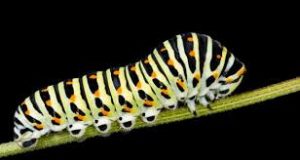Caterpillars : Electroreception

British scientists have found something very interesting about caterpillars: they have a sixth sense that most land animals don’t have.
- Through special hairs on their bodies called setae, they can pick up on electric fields with this sense, called electroreception.
- The study, which was published in the Proceedings of the National Academy of Sciences, looked at four types of caterpillars: the cinnabar moth, the rare vapourer moth, the European peacock butterfly, and the common wasp.
- Animals that live in water or on land often have electroreception, which helps them avoid being eaten or protected.
- Recently, research before 2013 uncovered that certain arthropods, including bumblebees, hoverflies, and spiders, also demonstrated this capability.
- However, unlike the caterpillars that were studied, these land-based arthropods do not use electroreception as a defense against predators.
- Researchers did a study where they used a live electrode with a fluctuating voltage of 180 Hz to simulate how a wasp would approach a prey animal.
- Caterpillars’ reactions included flailing and coiling, which are signs of stress that were not seen when they were in settings that were not electrified.
- The results showed that the setae on caterpillars reacted most strongly to frequencies around 220.3 Hz.
- This is very close to the frequencies of many predatory insects’ wings, which suggests that the caterpillars may have evolved to protect themselves.




